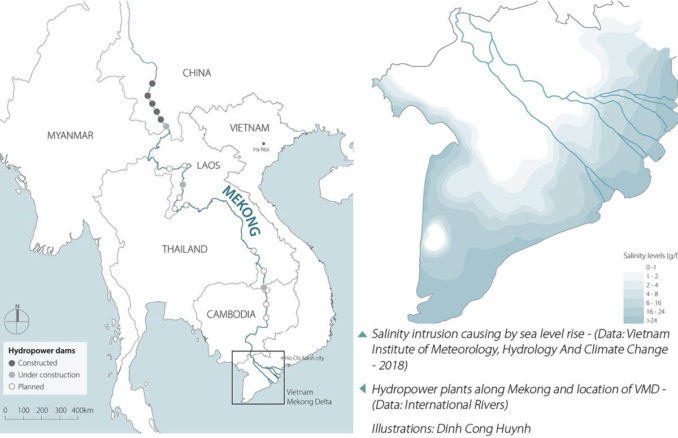
Vietnam Mekong Delta (VMD), located in the south of Vietnam, is the ending point of Mekong’s long journey, where the river creates a prosperous delta before pouring into the sea. Thanks to the fertile land and abundant of water resources, VMD has long been the largest agricultural production area in Vietnam. But the situation has been changing during the last decades, climate change, hydropower plants on Mekong’s main stream and the intensive agricultural practice are degrading water and soil quality, increasing the vulnerability of the whole delta and putting “the region of water” into serious water stress.
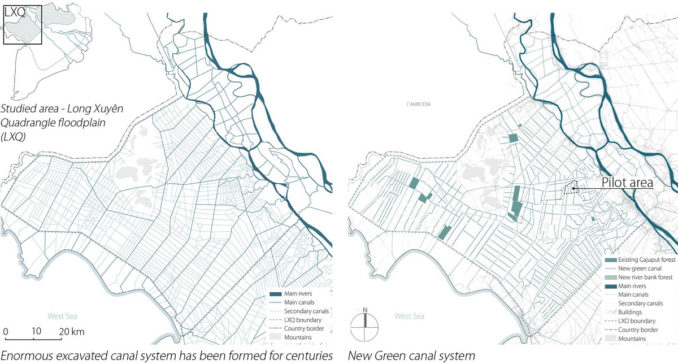
Green canal system
The thesis focuses on seeking a sustainable water storage system to create the initiative in water resource and increase the delta’s capacity to adapt to changes, with an affordable solution coming from existing landscape factors of the delta such as the excavated canals, dikes and sluice gates system, characteristic submerged forest of Cajuput and the annual flood.
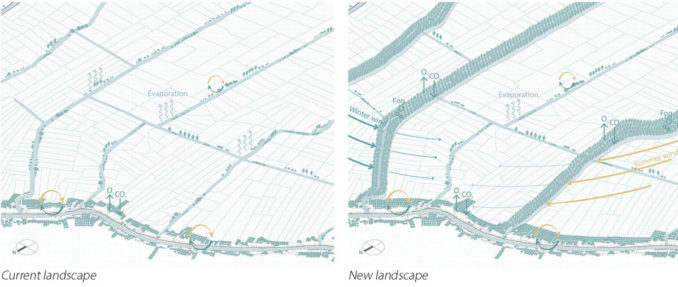
Taking advantages from mentioned elements, selected secondary canals will be coverted into strips of Cajuput forest, so call “Green canal”. Green canals will work as “water bags”, accumulating water during flood season and releasing during dry season for irrigation and flushing away salinity in coastal area.
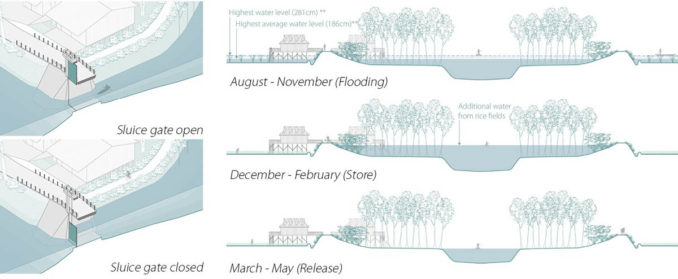
The feasibility of this system will be demontrated by a pilot area with typical charactersistic of the floodplain in term of landscape, land use and demographic data. This area also works as a model to persuade the locals before applying on a large scale.
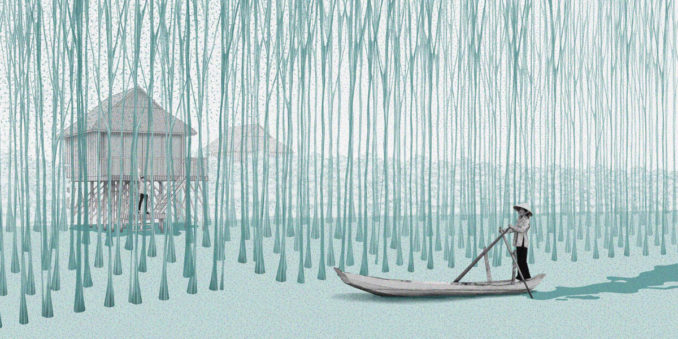
Cajuput forest will be established by extending on both side of the existing secondary canal – currently 16 – 20m width. The extensions include 20 – 25m of cajuput and 15m of dike and buffer zone. Forest side of the dike will be less slope than the other side in order to create a buffer for different ecosystems between the forest and the rice field. All trees and shrubs of new system are water tolerant species and most of them are already presence inside the landscape.
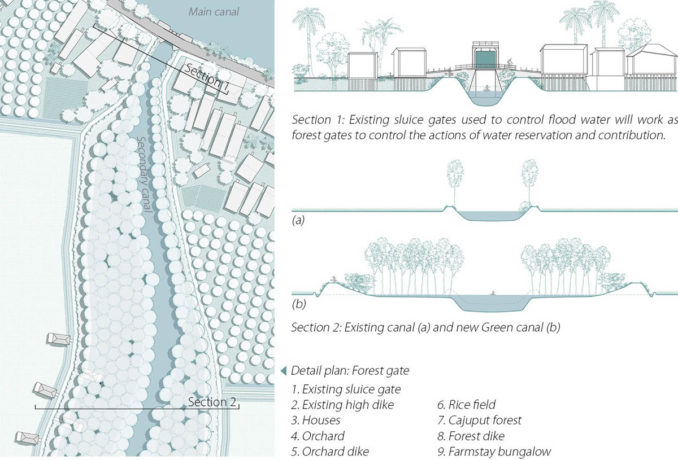
Actions of water reservation and contribution then will be controlled by sluice gates and pumps. During flood season, all the sluice gates are opened so water can be accumulated in side the forest. When the flood reach its maxium levels in October, sluice gates will be closed and water will be stored until March, starting of drought period, then it will be released to main streams, supply fresh water for surrouding areas. For areas near the coast, cajuput forests will keep its water for local use.
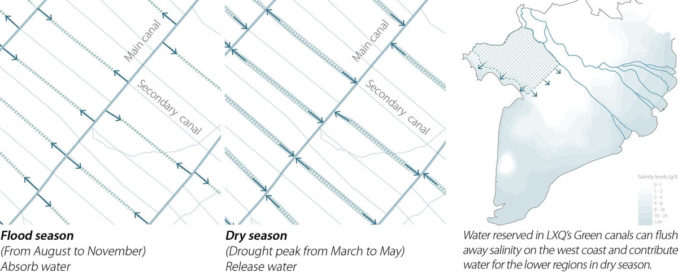
Beside the main function of water resource, Green canal system will bring much more ecological, economic and cultural values.
Ecological and environmental benefits
The establishment of new forests along the canals will add more layers of vegetation, divide the vast rice field into smaller rooms, which will not only change the landscape but also improve the local microclimate.
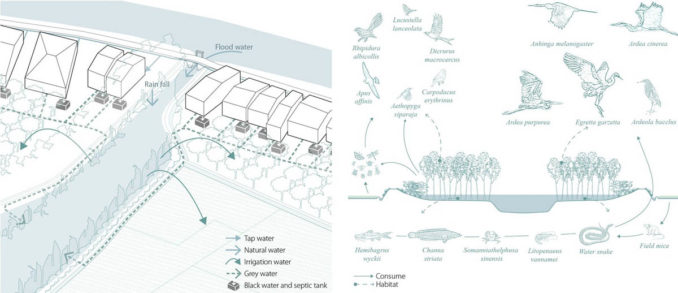
The forest will work as a natural water treatment plant for local domestic water to increase area’s surface and ground water. This submerged ecosystem as well creates natural habitats for plenty types of aquatic creature and attracts birds come here for foraging and nesting. The system’s food chains can naturally control the pests for the rice field, thus reduce pesticides usage.
Economic and cultural values
Green canals will turn the area of rice monoculture into a more diverse agricultural ecosystem, with mutual interation between different components. Apart from rice, farmers are able to earn more benefits from the forest such as essential oil, timber, fish-farming or honey with cajuput flavour.
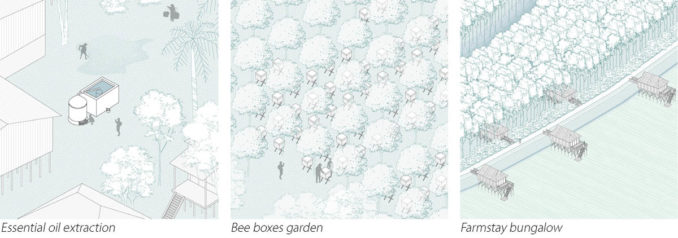
A diverse landscape could also create a community with diverse culture, thus attract tourists not only for the landscape but also for the cultural experiences. According to calculations, cajuput forest will bring much higher income for the local households in comparison with rice cultivation ($4500 versus $2500 per hectare per year).
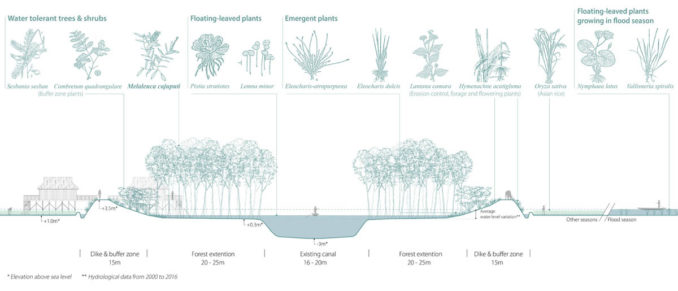
In Vietnamese, “water” also means “nation” and keeping water can be understood as keeping the nation’s well-being. Green canal system as a Water Keeper not only dealing with the problem of water resources but also protecting people livelihood and offering them a better life. Bringing a new image to the delta and improving environment quality and biodiversity.
Student project | Water Keeper – Sustainable water storage system for Vietnam Mekong Delta
Location | Vietnam Mekong Delta, Vietnam
Student | Dinh Cong Huynh at Politecnico di Milano
lmages and text credits | Dinh Cong Huynh
